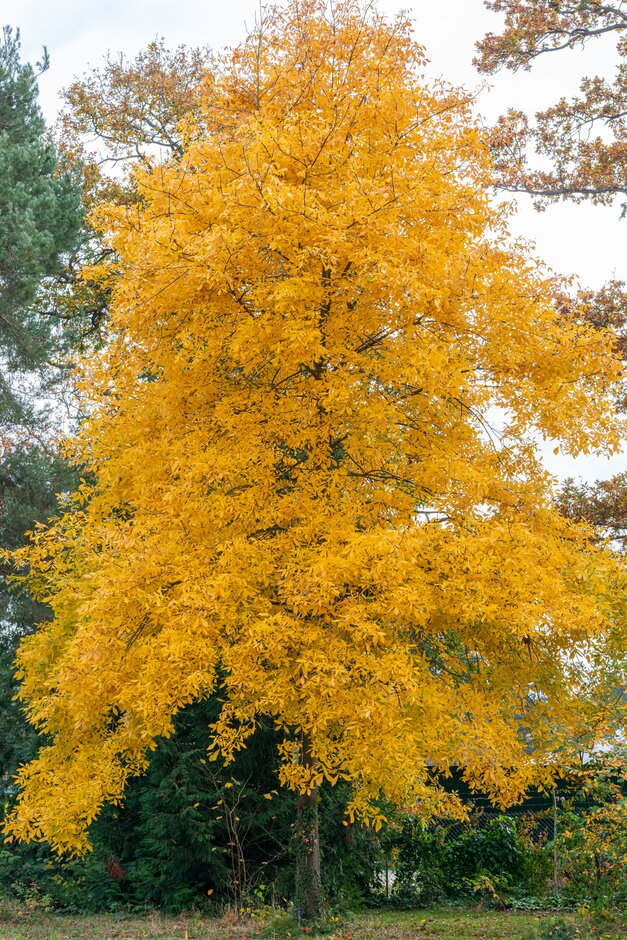Carya glabra
pignut hickory
A very large, slow-growing deciduous tree with an oval-shaped crown and deep root system, also known by its common name of 'pignut hickory'. It can reach a maximum height of around 30m, but is smaller if cultured. Smooth, grey bark in young specimens turns to a textured brown as the tree matures and the pendulous foliage emerges brownish-green, changing to glossy pale green in the summer and then finally golden-yellow in the autumn. Fruits are nut-like and pear-shaped with a brown shell, and only appear on very mature specimens. Although edible, they are very bitter and tend to be favoured more by wildlife
Synonyms
Carya porcinaSize
Ultimate height
Higher than 12 metresTime to ultimate height
20–50 yearsUltimate spread
Wider than 8 metresGrowing conditions
Moisture
Moist but well–drained, Well–drainedpH
Acid, Alkaline, NeutralColour & scent
| Stem | Flower | Foliage | Fruit | |
| Spring | Brown Green | Brown | ||
|---|---|---|---|---|
| Summer | Green | Brown | ||
| Autumn | Gold Yellow | |||
| Winter |
Position
- Full sun
- Partial shade
Aspect
East–facing or North–facing or South–facing or West–facing
Exposure
Exposed or Sheltered Hardiness
H6Botanical details
- Family
- Juglandaceae
- Native to GB / Ireland
- No
- Foliage
- Deciduous
- Habit
- Columnar upright, Pendulous weeping, Spreading branched
- Genus
Carya are vigorous deciduous trees of handsome appearance, the large pinnate leaves colouring well in the autumn; male flowers are in catkins, females are insignificant spikes, followed by nuts, the kernels of some being edible
- Name status
Correct
How to grow
Cultivation
Grow in a deep, fertile, humus-rich, moist but well-drained soil in full sun or partial shade. See tree cultivation for further advice
Propagation
Propagate by seed; seedlings rapidly develop a deep tap root and resent disturbance so plant out in permanent position in the first year
Suggested planting locations and garden types
- Architectural
- Low Maintenance
Pruning
See pruning group 1
Pests
Generally pest-free
Diseases
May be susceptible to crown gall, powdery mildews and leaf spot- see leaf damage on woody plants
Love gardening
Sign up to receive regular gardening tips, inspiration, offers and more
View our Privacy Policy
Get involved
The Royal Horticultural Society is the UK’s leading gardening charity. We aim to enrich everyone’s life through plants, and make the UK a greener and more beautiful place.

